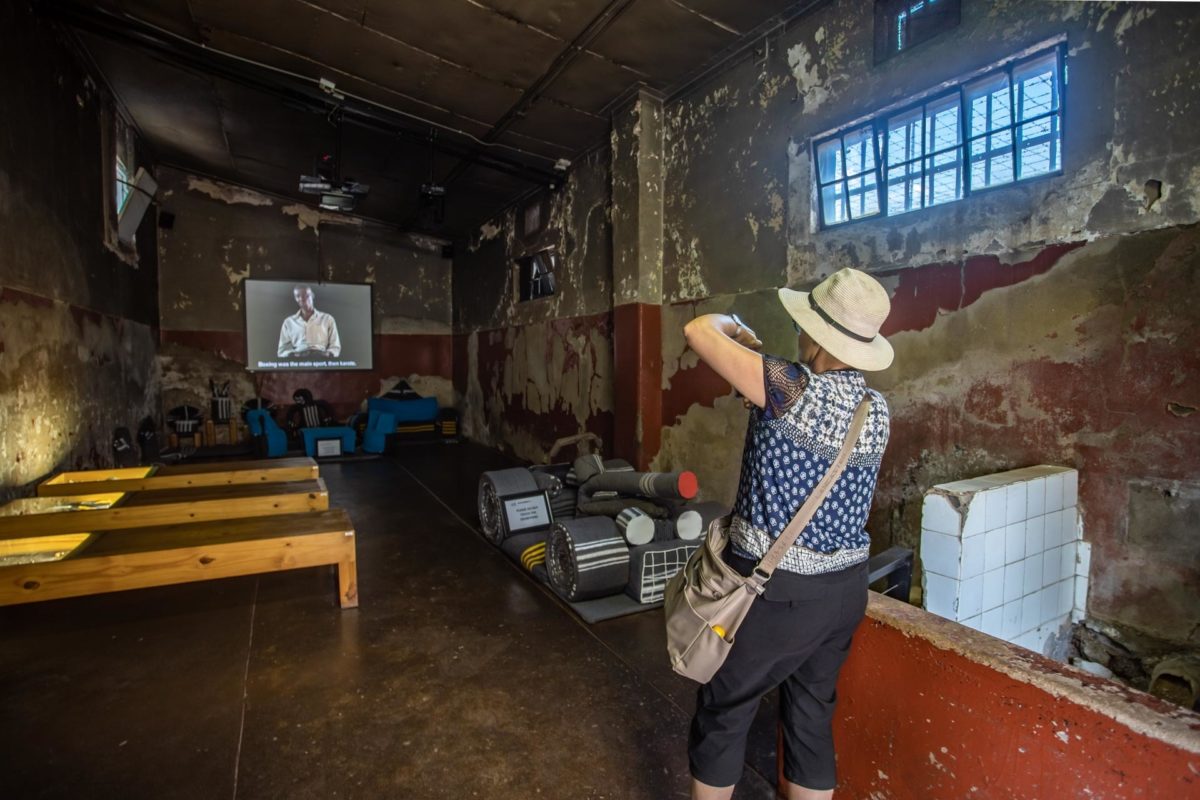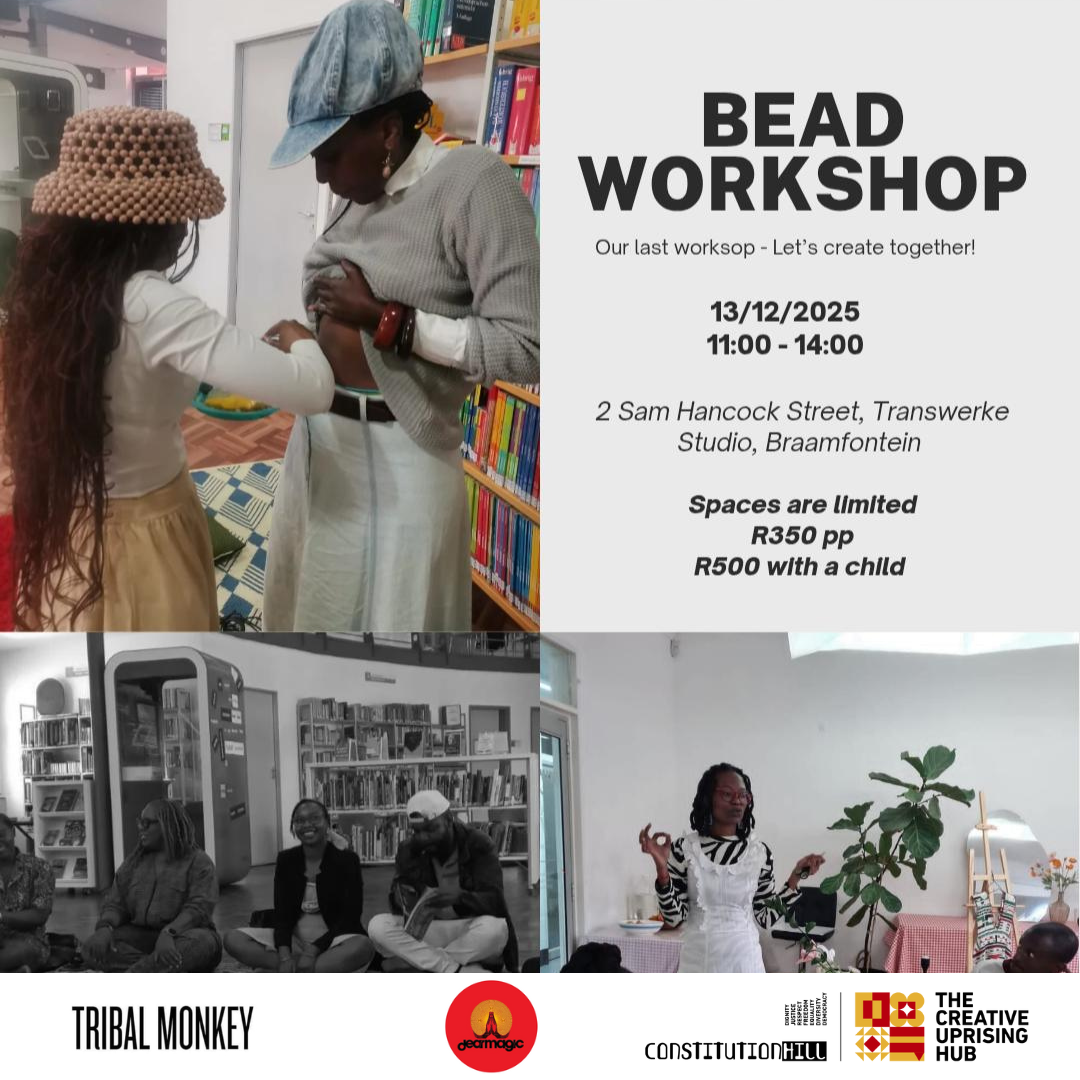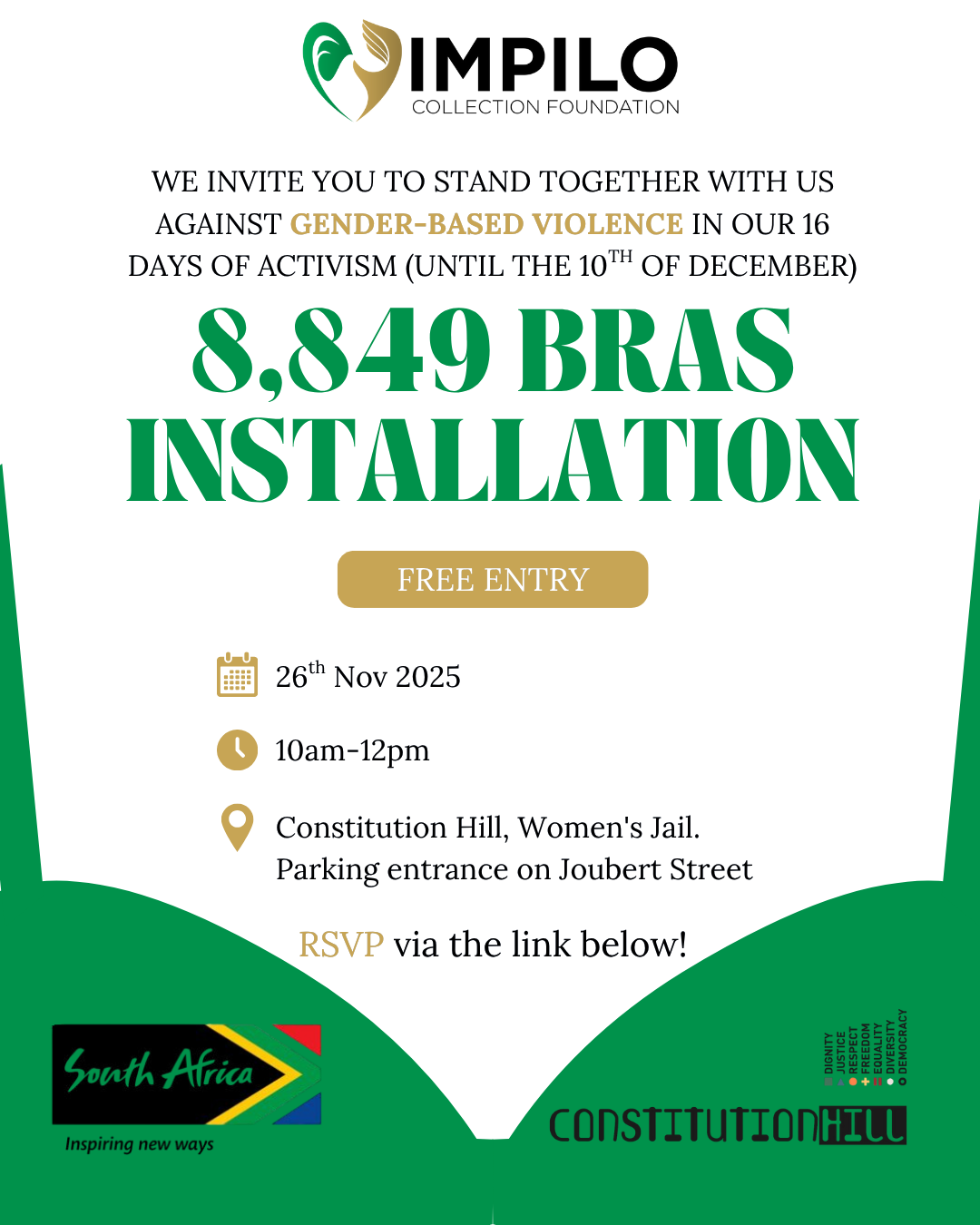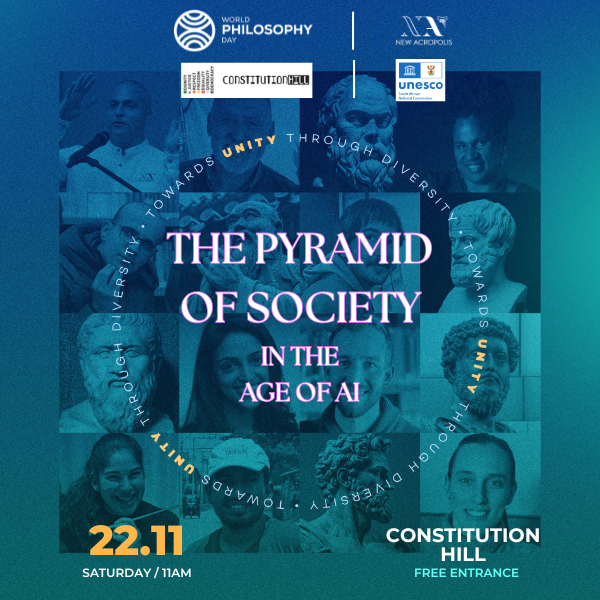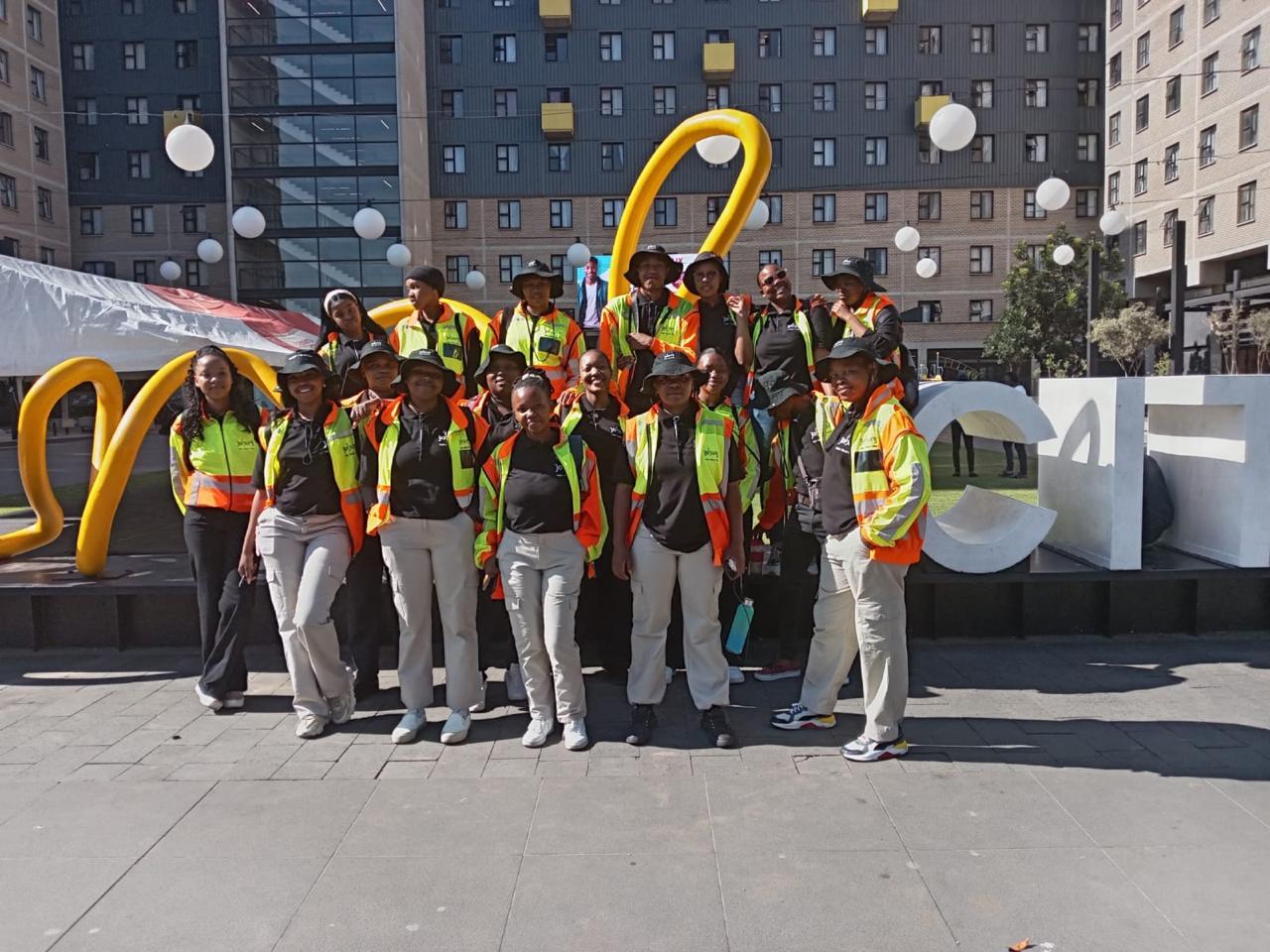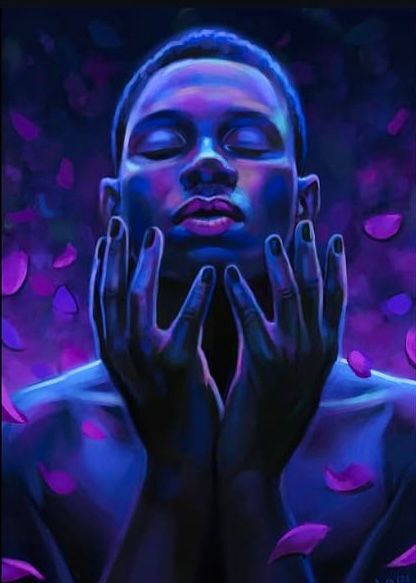
The Constitutional Court of South Africa, the highest court in the land. The building stands in a key position on Constitution Hill, and is open to the public and free to visit.

Visitors climbing the walkway that divides the historical Number Four prison, known for its oppression, and the Constitutional Court, known for its progressive decisions on landmark cases.

The front door of the Constitutional Court building.
Constitution Hill is a must-see attraction in Johannesburg – it's an iconic site that exposes visitors to South Africa's disturbing apartheid history, but is also a reflection of the country's dynamic present.
Whenever I have visitors from out of town and an hour or two to spend, I like to take them to Constitution Hill, one of Johannesburg's top tourist attractions.
As a Joburger, I've been more than a dozen times, and I never get tired of going.
What makes this site so special is that it captures in one experience what South Africa really is, from the dark, oppressive days of apartheid, to the dawn of democracy in 1994 and, through the Constitutional Court, the hope for a better future.
There can't be many prisons in the world that have had such famous and iconic prisoners as Mahatma Gandhi and Nelson Mandela.
You can visit Mandela's cell in the Old Fort, so called because it was once a military fort.
It's also worth seeing the display on Mahatma Gandhi in the Number Four prison that includes artefacts such as a prisoner's uniform similar to what he would have worn and a pair of leather sandals he gave to Union of South Africa Prime Minister General Jan Smuts. The statesman later returned them to Gandhi on his 70th birthday with the words: "I have worn these sandals for many a summer ... even though I may feel that I am not worthy to stand in the shoes of so great a man."
Parking is easy and safe at Constitution Hill if you are driving yourself.
The site is also easily accessible via a taxi or Uber or, if you have a little more time, take the City Sightseeing bus and make it one of the stops you hop off and spend some time at.

Mahatma Gandhi's sandals, which he gave to Union of South Africa Prime Minister Jan Smuts, who later gave them back to him.
Number Four, which once housed black political and criminal prisoners under the harshest of conditions, can be experienced either as part of a standard one-hour tour or a full two-hour tour.
Prisoners were held here in filthy, cramped conditions, tortured, held in solitary confinement and strip-searched.
The prison has been kept much as it was in apartheid days, so you'll get an evocative sense of what it felt like to be imprisoned here.

Prisoners slept side by side in overcrowded cells ruled by prison gangs.

The isolation cells, where prisoners were kept for long periods in filthy conditions.

It's really worth doing a guided tour of Constitution Hill.

A view of Number Four prison, surrounded by the city of Johannesburg.

Visitors' reflections inside Number Four prison.

The exterior of the Constitutional Court of South Africa.
If visiting the old Number Four prison is likely to bring you close to tears, walking into the Constitutional Court, opened on Human Rights Day, 21 March 2004, will make your soul sing.
The building was designed by OMM Design Workshop in collaboration with Urban Solutions. The principle architects were Janina Masojada, Andrew Makin and Paul Wygers. The building uses elements of the site's past, including old bricks, but is custom built and modern.
The actual courtroom, which is open to the public, is presided over by 11 judges, who sit in chairs backed by distinctive Nguni cow skins.
Long, shallow windows look out on the feet of people walking by as a reminder that the court sits at the feet of the people.

Inside the Constitutional Court.

One of three paintings in Judith Mason's triptych, The Man Who Sang and the Woman Who Kept Silent (oil on canvas, 1998).
The Constitutional Court building houses the actual court, but also is home to the offices of the Constitutional Court judges (not open to the public), the Constitutional Court Library and an impressive collection of modern South African art.
Famous artists represented here include William Kentridge, Judith Mason, Gerard Sekoto, Marlene Dumas, Sipho Ndlovu, Norman Catherine and Cecil Skotness, among others.
The art was collected by Constitutional Court Justice Albie Sachs, and was mostly donated.
It's worth taking a walk down the stairs to the bottom of the building and back up again, which will give you a good overview of the collection.

Detail on the exterior of the Constitutional Court building.

Modern art inside the Constitutional Court building.
The door to the actual Constitutional Court courtroom.

The carpet inside the Constitutional Court building resembles the shade of a tree, as a modern echo of the traditional African justice system, which took place under trees.

Detail of an African basket, on display in the Constitutional Court.

 +27 11 381 3100
+27 11 381 3100
